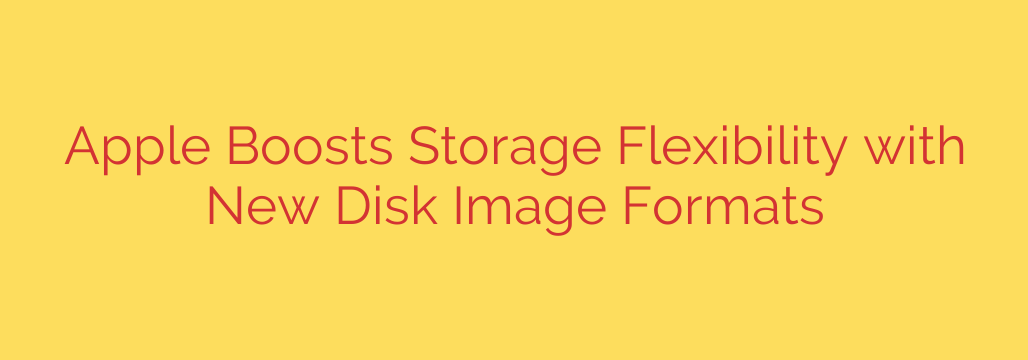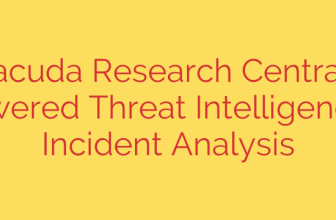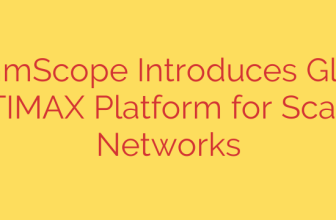
Understanding RDX: Apple’s Powerful New Disk Image Format
For years, Mac users have relied on disk images, most notably the .dmg file, for everything from software installation to creating secure, encrypted archives. While these formats have served us well, the underlying technology has remained largely unchanged. Now, Apple is introducing a significant evolution in data storage with a new family of disk image formats, set to enhance security, reliability, and speed.
At the heart of this update is the Replicating Disk Image (RDX) format. This modern architecture moves away from the limitations of older formats to provide a more robust and flexible solution for managing data on macOS.
What Makes the RDX Format a Game-Changer?
Unlike traditional disk images that often require full-file scans for verification, the RDX format is built on a foundation of block-level data storage. This means the image is composed of individual data blocks, each with its own unique identifier and checksum.
This architecture delivers several key advantages:
- Enhanced Data Integrity: Every block of data within an RDX image is protected by a strong SHA-256 checksum. If even a single bit of data is corrupted during transfer or storage, the system will immediately detect the error upon verification. This provides a new level of confidence that your data is exactly as you left it.
- Faster Verification and Transfers: Because the system can verify individual blocks, the process of mounting or checking an RDX disk image is significantly faster than with older formats. This efficiency also extends to syncing and transferring these images over a network, as only the changed blocks need to be sent.
- Improved Flexibility: The block-based structure is inherently more adaptable, allowing for new capabilities and optimizations that were not possible with monolithic file formats like the classic
.dmg.
Meet the New Family of Disk Images
The RDX technology isn’t just a single format but a foundation for a new family of disk images, each tailored for a specific purpose.
RDX (Read-Only Replicating Disk Image)
This is the modern successor to the compressed.dmgfile. It’s a read-only format ideal for securely distributing software. Developers can package their applications in an RDX file, confident that the built-in checksums will protect against corruption and ensure users receive the file exactly as intended.WRDX (Writable Replicating Disk Image)
Think of the WRDX as the next-generation version of sparse bundle or sparse image files. This is a read-write format perfect for creating personal archives, storing project files, or any scenario where you need a flexible and secure container for data that changes over time. Its block-level nature means it grows efficiently as you add data.SRDX (Signed Replicating Disk Image)
The SRDX format represents a major leap forward in security. This is a read-only image that is cryptographically signed. When you open an SRDX file, macOS can verify the developer’s signature to confirm two critical things: the origin of the file and that it has not been tampered with since it was signed. This is a powerful defense against malware being injected into software installers.
Actionable Security Tips for Users and Developers
These new formats bring practical benefits that you can leverage for better data security and management.
- For Users: When downloading software packaged as an
.srdxfile, you can have a much higher degree of trust in its authenticity. Your system automatically verifies the signature, offering a layer of protection that simply wasn’t available with older formats. Always prefer signed software (SRDX) when available. - For Developers: Adopting the SRDX format for software distribution is a critical step in protecting your users and your reputation. Signing your disk images assures customers that they are downloading a legitimate, unaltered version of your product.
- For Backups and Archives: For creating personal encrypted archives, the WRDX format is the new standard. Its combination of writability, efficient storage, and strong data integrity checks makes it superior to older sparse image formats for protecting your valuable files.
Ultimately, the introduction of the RDX family of disk images is a forward-thinking move that modernizes a core component of the macOS experience. By focusing on speed, robust data integrity, and verifiable security, Apple is providing powerful new tools for both developers and end-users to manage and protect their digital assets more effectively than ever before.
Source: https://www.helpnetsecurity.com/2025/10/03/apple-disk-image-format/








